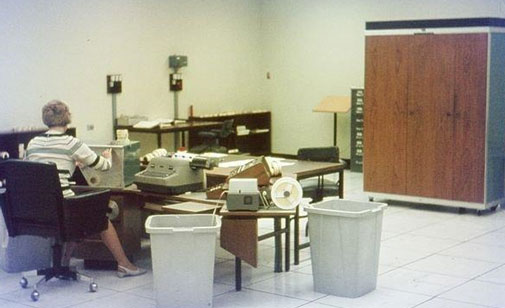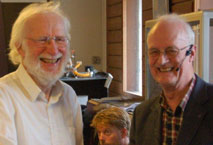Development of photoelectric astrometry
Erik Høg, an astronomer at the University of Copenhagen, worked for 15 years at the observatory in Hamburg. Here they had plans for an expedition to Perth in Western Australia with an old meridian circle.
But in 1960 Erik Høg got a good idea for photoelectric astrometry for the expedition in Australia. He proposed counting photons for the measurement of light and using a computer for calculations.
You let the star glide across some small slits, while constantly measuring the light coming through the slits. This measures both the position of the star and its brightness.
He knew about the technique for electronic counting before other astronomers because he had encountered it as a soldier when they had measured radioactivity in dust from the atmosphere, which originated from the detonation of hydrogen and atomic bombs by the superpowers.

The director of the observatory in Hamburg, Otto Heckmann, was immediately on board with his ideas about photoelectric astrometry and he was confident that Erik Høg would endure all of the development years that lay ahead. It actually took seven years in the end.
They bought the best computer for the job, called a calculating machine then, and the best machine was the Danish GIER, which also came with to Australia. It was a large astronomical expedition by the standards of that time, with a staff of six to ten people making observations and calculations over five years. The results for a total of 25,000 stars were published in 1976.
Great strength for faint stars
The photoelectric method for astrometry was more accurate than the old visual method and you could measure fainter stars using the meridian circle. Moreover, the method was entirely electronic and therefore more efficient, because the observations were punched directly onto the punched paper tape of the time, which could then be fed into the computer, GIER.
The photoelectric method was ideal to use in a satellite and the only practical option, which was fully automatic. It gives an impression of the strength of the method that the faintest stars in the Tycho-2 catalogue are based on the registration of only around 50 photons from the star and that these photons were gathered through a combination of 100 measurements spread over a period of three years.
It was enough to provide greater accuracy for the star's position than could be reached from Earth and at the same time a good measurement of the brightness in two colours. Of course, the bright stars had much greater accuracy, since many photons are synonymous with great accuracy.
A Danish contribution to astrometry

Meridian circle in Brorfelde
Over the last fifty years Danish astronomers have made two special contributions to astrometry, both originating at the new meridian circle set up in Brorfelde in 1953 and both based on the photoelectric technique for astrometry, which astronomer Erik Høg developed in his fifteen years at the observatory in Hamburg from 1958.
The first astrometric contribution consists of the development of an automatic meridian circle by the technical staff in Brorfelde led by Erik Høg and Leif Helmer and observations with this at La Palma from 1984 led by Leif Helmer in collaboration with English and Spanish astronomers.
The second contribution begins in 1975 when Erik Høg made a new design for an astrometric satellite, Hipparcos, which was developed and launched by ESA.
Methods to observe the stars

Photographic and photoelectric methods
It was the plan from the start that the meridian circle in Brorfelde should observe the stars using a photographic method.
A photographic plate was moved with the same speed as the star forming a small spot on the plate. Subsequent measurement in the laboratory and calculations would then give the position of the star. It was an entirely new and promising method, which was tested at an observatory in Lund, and which could provide better accuracy and measure fainter stars than the old visual methods.
Peter Naur and Erik Høg worked with this development around 1957 and Svend Laustsen succeeded in getting good results in the 1960s with a photographic apparatus that was in use until 1976. But the development went very quickly back then, as the photoelectric method proposed by Erik Høg in 1960 was superior to the photographic method in terms of accuracy and sensitivity and because it could be automated, so the measurements could easily be entered into a computer.
